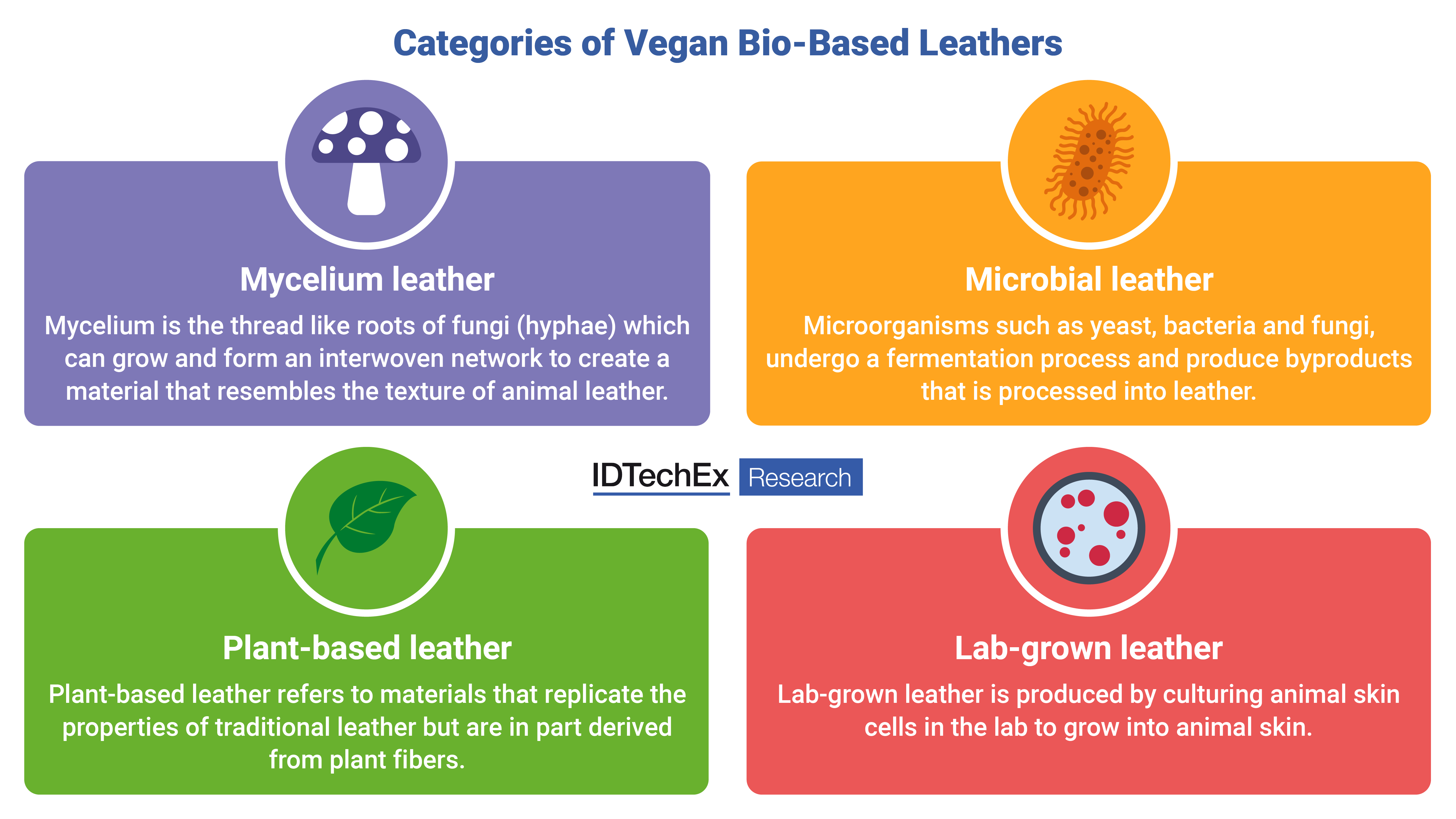
|
Author: James Kennedy, Technology Analyst at IDTechEx Until recently, there have been no serious competing materials for animal and plastic (synthetic) leather. A new generation of bio-based alternatives aims to displace these incumbent materials with plastic-free, sustainable alternatives. An extensive breakdown of leather alternatives, technologies, market players, and outlook is available in IDTechEx's brand-new market report, “Vegan Bio-Based Leather 2024-2034: Technologies, Trends, Players”. What are the major issues with incumbent leather materials? According to the UN, animal cultivation is a major contributor to greenhouse gas emissions, with estimates ranging between 10-20% of total emissions. Increasingly, consumers are demanding sustainable materials that are animal-free. This is driven by heightened awareness of the environmental impact of animal leather and vegan movements rejecting the utilization of animals entirely. Until now, the only alternative to compete with animal leather has been plastic leather, which has been marketed as vegan leather. Presently, plastic leather production far exceeds that of animal leather when measured by surface area. Unfortunately, plastic leather has sustainability problems. These include the fact that it is currently a hugely challenging material to recycle due to its composition and that almost all plastic utilized is derived from petrochemicals. The argument against plastic leather is far more straightforward than that of animal leather and limiting its use is a necessity to preventing environmental damage. Answering the demand for alternatives Over 70 companies with a cumulative US$1.2 billion of funding have entered the market, aiming to produce a competing material. Most of these are startups entering the market in the last 3-5 years. The exciting move into this space has been bolstered by many key brand partnerships providing funding and raising awareness of these new materials. What are vegan bio-based leathers made from? Four major technology categories currently exist in the vegan bio-based leather market. Each is a different approach to producing an animal-free, plastic-free, and sustainable alternative to incumbent leathers.
|
||

|
The four major technology categories. With a few notable exceptions, these are the four main approaches to producing vegan biobased leather alternatives. Source: IDTechEx |
||
|
These are: Mycelium leather: sometimes referred to as mushroom leather. It is made from the root like mycelium hyphae which grow into a dense mat. Plant-based leather: refers to leather alternatives that use plant fibers as the major feedstock. Many companies utilize the byproducts of the agricultural industry, while others utilize purpose-cultivated crops. The feedstocks are wide-ranging and include pineapples, apple skin, cacti, and grapes, among many others. Microbial leather: producing leather from the fermentation products of bacteria and fungi. This can include cellulose, collagen, spider silk, or PHB. Lab-grown leather: an ambitious technology pursued by a small number of companies that aim to reproduce animal skin in lab conditions by harvesting skin cells from animals and then cultivating them. Major opportunities and challenges for vegan bio-based leather One of the major challenges for vegan bio-based leathers is to achieve the necessary material properties while being plastic-free. Additionally, the material must compete on price; otherwise, large-scale adoption will be untenable. Being sustainable alone will not be enough to convince consumers and manufacturers to choose these materials. While the current volume of vegan bio-based leather materials is a small fraction of the total leather materials production globally, the scope for expansion is great. Even capturing a small percentage of this total market presents a huge opportunity. With so many recent arrivals to the market and increasing competition, the next decade is expected to see more companies attempt to break into the market. Additionally, the emergence of players with large production volumes will result in vegan bio-based leathers being adopted into a range of new applications. Vegan bio-based leather market forecast For further information on this market, including discussion on over 70 players, analysis of numerous vegan bio-based leathers, and a 10-year market forecast, see the new IDTechEx market research report “Vegan Bio-Based Leather 2024-2034: Technologies, Trends, Players”. For more information on this report, including downloadable sample pages, please visit www.IDTechEx.com/VeganLeather. For the full portfolio of sustainability research available from IDTechEx, please visit www.IDTechEx.com/Research. Upcoming free-to-attend webinar Vegan Leather: New Bio-based Materials Aiming to Disrupt the Leather Industry James Kennedy, Technology Analyst at IDTechEx and author of this article, will be presenting a free-to-attend webinar on the topic on Wednesday 31 January 2024 – Vegan Leather: New Bio-based Materials Aiming to Disrupt the Leather Industry. In this webinar, IDTechEx will cover the potential opportunities of emerging vegan bio-based leather materials. The webinar will include:
To find out more and register your place on one of our three sessions, please click here. If you are unable to make the date, please register anyway to receive the links to the on-demand recording (available for a limited time) and webinar slides as soon as they are available. |





